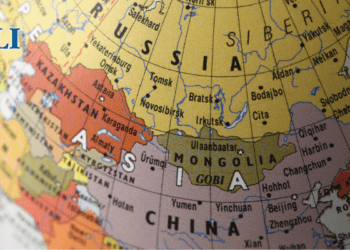This article originally appeared in The Hub.
By Trevor Tombe, May 29, 2025
Concerns about the cost of doing business across Canada’s vast geography and decentralized federation have been around for decades (or more). For good reason. “Internal barriers to trade and labour mobility cost Canada as much as $200 billion each year,” King Charles III correctly noted in the speech from the throne.
But progress on these internal trade costs has come in fits and starts, from the Agreement on Internal Trade in the mid-1990s to the Canadian Free Trade Agreement in 2017. Despite these efforts, it wasn’t until President Trump’s tariff threats disrupted global economic order—targeting imports to the United States, including those from Canada—that many political leaders began taking serious steps to eliminate internal trade barriers once and for all.
Today, it’s not the federal government driving most of the progress; it’s the provinces. This isn’t a knock on the federal government, to be clear, but a simple consequence of internal trade frictions mostly being within provincial jurisdiction. By enacting differing rules, regulations, standards, and certifications, provinces make it difficult for businesses to serve Canadians beyond their local borders. The fragmentation of Canada’s economy holds back productivity, stifles growth, and keeps productive firms smaller than they might otherwise be.
Serious action requires provincial action. And we’re starting to see just that, with bold moves over the past few months to cut these barriers down to size. Much will depend on provincial follow-through, but we might be entering a new era for internal trade in Canada.
A promising shift led by provinces
Nova Scotia launched a new approach earlier this year, introducing legislation committing to the mutual recognition of rules, regulations, standards, and credentials. Rather than harmonizing regulations—a slow, complex process—this model simply means that if a business complies with the rules in one province, it is automatically deemed compliant with Nova Scotia’s—so long as the other province reciprocates. It’s a pragmatic, flexible path forward.
Nova Scotia’s initiative was quickly echoed by Ontario, and Prince Edward Island now has similar legislation moving through its legislature. Other provinces are striking bilateral agreements: Ontario with New Brunswick and Manitoba; New Brunswick with Newfoundland and Labrador.
But could a patchwork of bilateral deals do more harm than good? Might they complicate rather than simplify trade?
New research: real gains, even beyond the provinces involved
New analysis published by MEI explores these questions.
Using some relatively standard economic tools, my collaborators and I estimate trade costs between provinces engaged in mutual recognition and then simulate the impact on output, wages, prices, and other key indicators from removing those costs.
The findings are clear: even bilateral agreements yield significant benefits. Nova Scotia, for example, has the equivalent of a roughly 15 percent trade cost between it and other provinces, averaging about 11 percent with Ontario and rising to nearly 20 percent with provinces like Manitoba, Saskatchewan, and others in Atlantic Canada.
Not surprisingly, removing these costs has a big impact. We estimate that a reciprocal agreement between Nova Scotia and Ontario alone could increase national GDP by $4.1 billion. In Nova Scotia, wages could rise by an estimated 4.1 percent, and the average cost of goods and services could fall by about 1.2 percent. While gains in Ontario are more muted, given its size, they remain positive.
And thanks to national supply chains, positive spillovers occur elsewhere. Alberta, for example, stands to gain approximately $75 million annually—or $15 per resident—from a deal between Nova Scotia and Ontario, even without changing any of its own regulations for Alberta. But it’s gains to that province for doing nothing, and demonstrates that any benefits from liberalizing trade between small groups of provinces don’t just shift activity away from others.
Other provincial agreements could be just as promising.
The case for expanding mutual recognition
A mutual recognition deal between New Brunswick and Ontario could add $5.9 billion to the national GDP. One between New Brunswick and Newfoundland and Labrador, $2.7 billion. And between Ontario and Manitoba, $5.2 billion.
Looking beyond the early movers that have so far announced such deals, there is large economic potential available to others that follow. A bilateral deal between British Columbia and Alberta, I estimate, could be worth $26 billion annually. Alberta-Saskatchewan mutual recognition might add $18 billion; Alberta-Manitoba, $6 billion.
Ontario and Quebec could see real GDP gains of $32 billion if they embraced reciprocal mutual recognition. And although Quebec’s strong emphasis on provincial autonomy, language laws, and the like, probably means such a deal is not likely to occur, it’s worth knowing how large the economic gains are that they’re leaving on the table.
There are many more comparisons in the paper.
A path forward for Canada’s economy
Though the details of each agreement still need refining, the momentum is really encouraging. A First Ministers’ meeting scheduled for next week may see new announcements that build on this progress. Regardless of what unfolds, these bilateral initiatives are an interesting way forward. Agreements that broadly recognize one another’s regulations, credentials, and standards—provided reciprocity exists—can yield significant national gains. As more provinces join, the incentive for others to participate grows stronger.
It won’t be easy, and some political risks need to be taken. The greatest barriers lie in services, after all, not goods. And here, licensing and certification rules often restrict the ability to operate across provincial lines. These are typically framed as labour mobility issues, but the biggest economic wins come from enabling service providers to sell across borders without being locally registered. Naturally, credentialing bodies may resist change, as they benefit from arrangements. But policymakers must weigh these narrow interests against the broader economic one.
In a time of sluggish productivity growth, internal trade liberalization may be one of the few policy tools available to drive lasting improvements—and quickly.
Trevor Tombe is a professor of economics at the University of Calgary, the Director of Fiscal and Economic Policy at The School of Public Policy, a Senior Fellow at the Macdonald-Laurier Institute, and a Fellow at the Public Policy Forum.






